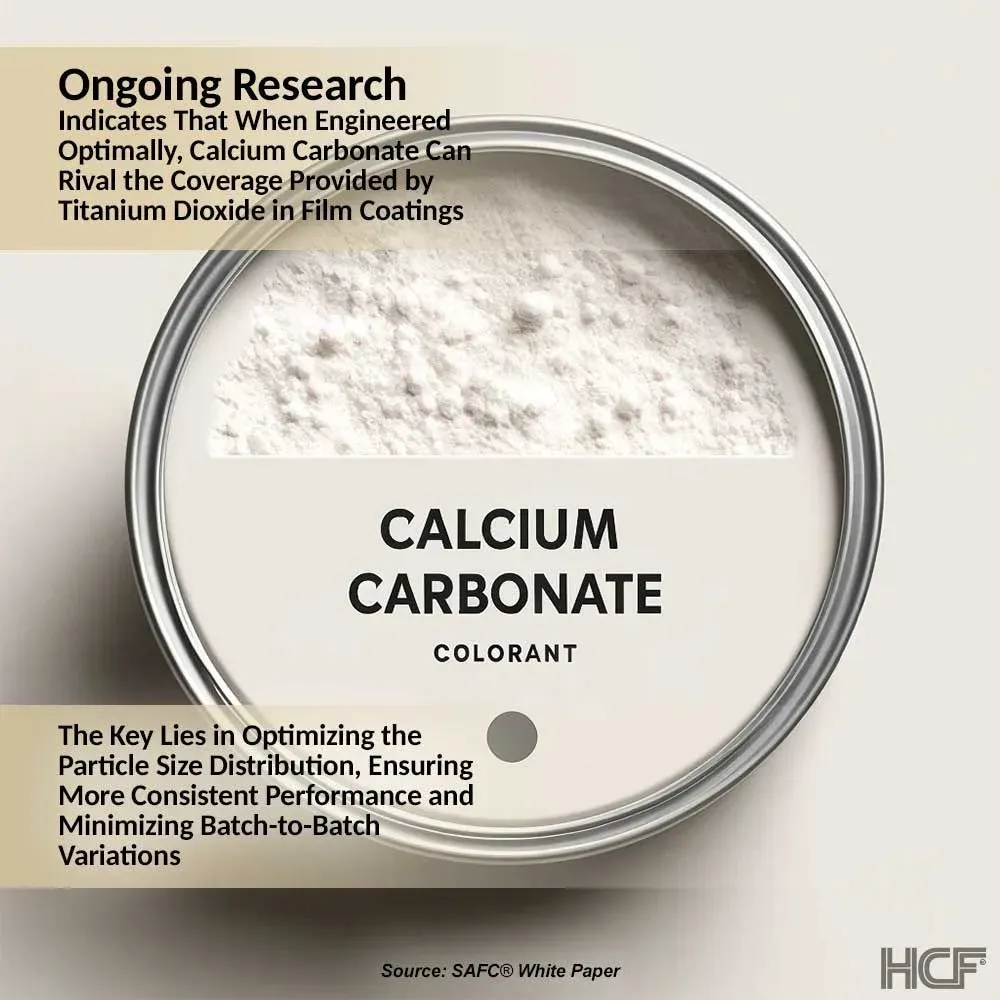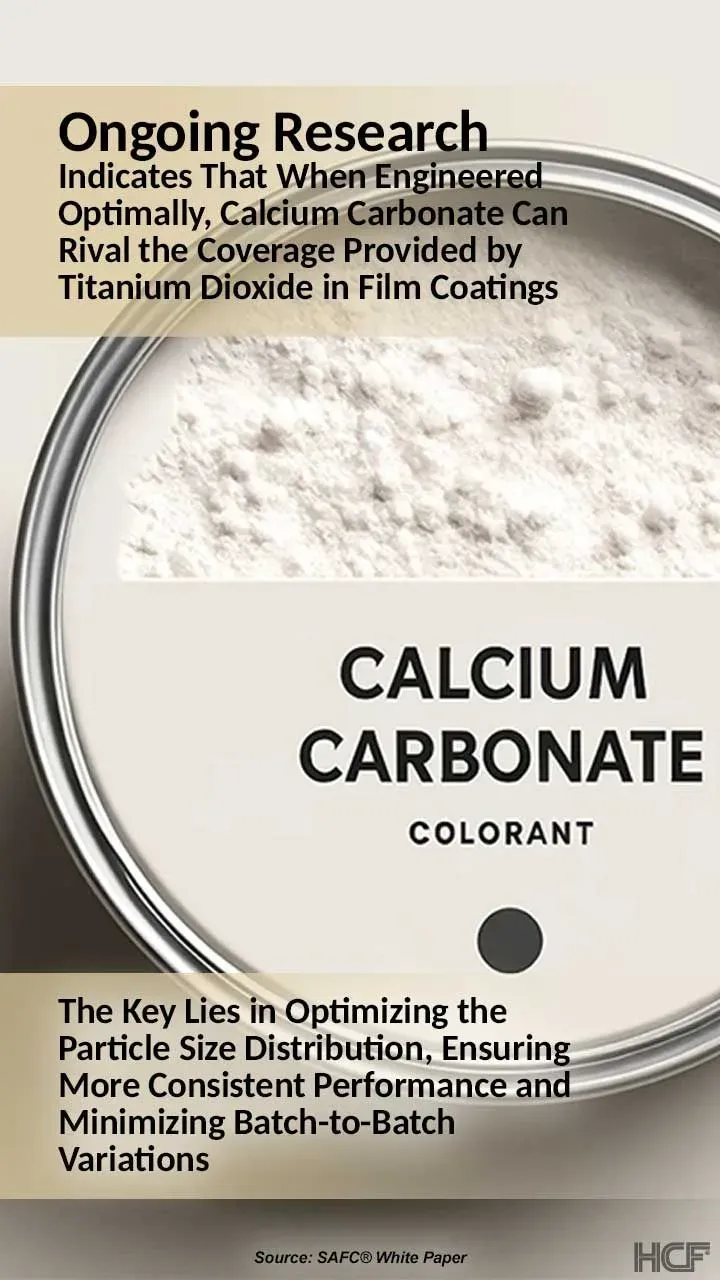
2EXCIPIENTS
Calcium Carbonate: The Sustainable, Safe, Health-Conscious Whitening Nutrient
3 min read

Essentials
- Calcium Carbonate is emerging as a promising alternative to Titanium Dioxide due to its whitening properties, added benefits of providing Calcium, and strengthening products.
- The use of Titanium Dioxide in the food and supplement industries has seen a decline of over 40% since 2010 due to increasing scrutiny.*
For years, Titanium Dioxide (TiO2) was the go-to agent for achieving the pristine whiteness you see in many tablets and capsules. In fact, many brands still use it for its potent color performance (even when used in tiny amounts).
If it was the standard, then why is Titanium Dioxide under a cloud of scrutiny?
The winds of change are blowing, and there has been a noted shift in the industry's preference regarding Titanium Dioxide in recent years. In fact, Titanium Dioxide use in nootropics has decreased by over 40% since 2010.*
What happened? Consumer advocacy groups and global regulatory bodies raised concerns that primarily revolve around the potential genotoxic effects of TiO2.*1
Then, in August 2022, the European Union took a strong stance, banning its use in the nootropic (and dietary/food) industry.2 France had already set the ball rolling with its ban on Titanium Dioxide from January 1, 2020.
All these put even more pressure on the nootropic (and dietary/food) industry to take action and make a united stand against the use of Titanium Dioxide.
How about the alternatives?
Titanium Dioxide can be a difficult to replace excipient—that’s true. As a mineral, TiO2 is extremely cost-effective compared to alternatives.3 Plus, common market alternatives like Rice Starch and Calcium Carbonate can require higher usage rates than Titanium Dioxide, which may increase production costs.
So, which of these two potential alternatives is our go-to choice? Rest assured, it’s not a decision we took lightly.
Let's start with Rice Starch. As a natural whitening agent, Rice Starch may reduce the #%@ artificial numbers on ingredient lists (and is relatively inexpensive). These are all positives. But Rice Starch also has drawbacks, which ultimately made us skip it in our advanced nootropics.
Here’s an example: Rice Starch can retain moisture and thicken products. Far from ideal. Especially because it has to be used in larger amounts—typically about 5% of the product volume as opposed to 0.5%-1% with Titanium Dioxide.
The second alternative, our go-to in HCF®’s advanced nootropics, is Calcium Carbonate.
Apart from its excellent whitening properties, Calcium Carbonate can offer the dual advantage of containing the nutrient Calcium and strengthening nootropics. Calcium Carbonate is also a particularly interesting alternative to Titanium Dioxide because particle engineering may significantly influence its efficacy. Elements such as particle size, shape, surface structure, and arrangement are important in determining the opacity of white pigments.*4


HCF® has a long-standing commitment to exploring sustainable and health-conscious alternatives in our nootropics.
And that's why HCF®’s advanced nootropics contain no Titanium Dioxide, GMOs, gluten, dairy, caffeine, eggs, wheat, artificial colors or flavors, Magnesium Stearate, nuts, fish, or soy.
But HCF®’s 7 Advances® principles go beyond simply avoiding unnecessary fillers, binders, and additives. These are our commitment to purity, transparency, and safety in nootropics.